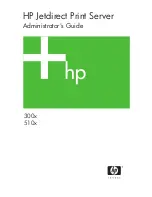
12-33
Cisco SCE 8000 10GBE Software Configuration Guide
OL-30621-02
Chapter 12 Identifying and Preventing Distributed Denial-of-Service Attacks
Monitoring Attack Filtering
As with other log files, there are two attack log files. Attack events are written to one of these files until
it reaches maximum capacity, at which point the events logged in that file are then temporarily archived.
New attack events are then automatically logged to the alternate log file. When the second log file
reaches maximum capacity, the system then reverts to logging events to the first log file, thus overwriting
the temporarily archived information stored in that file.
The following SNMP trap indicates that the attack log is full and a new log file has been opened
ST_LINE_ATTACK_LOG_IS_FULL
Note
When the attack log is large, it is not recommended to display it. Copy a large log to a file to view it.
How to View the Attack Log
From the SCE# prompt, type:
How to Copy the Attack Log to a File
From the SCE# prompt, type:
Command
Purpose
more line-attack-log
Displays the attack log.
Command
Purposes
more line-attack-log redirect
filename
Writes the log information to the specified file.
















































